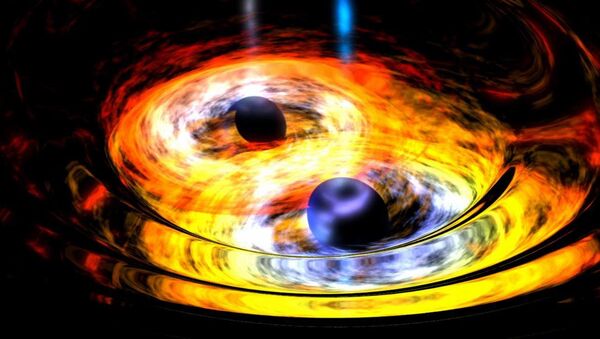Scientists at the Tata Institute of Fundamental Research in Mumbai, India have calculated when an enormous flare is released by two supermassive black holes. Their study was published in the Astrophysical Journal Letters.
Astronomers have been examining these supermassive black holes for decades. Both of them have a humongous mass. The bigger one is the most massive black hole ever observed and has a weight of 18 billion solar masses (mass bigger than the Sun). For comparison, our Milky Way has a supermassive black hole that weighs 4 million solar masses.
This whopper of a supermassive black hole is surrounded by an accretion disc of gas and dust and is orbited by a smaller one, which in turn has a very unusual, highly tilted orbit. But when it crashes the through accretion disc it creates an enormous flare that is brighter than one trillion stars. This occurs twice during its orbit.
However, since the smaller behemoth has an unusual orbit, the timing of these flares is irregular. Sometimes they occur as little as one year apart and sometimes the interval could last a decade.
Previous research conducted in the 2010s allowed scientists to calculate the orbit and predict the flare within three days.
The detection of gravitational waves via LIGO (Laser Interferometer Gravitational-Wave Observatory) in 2015 changed the game. Einstein predicted the existence of gravitational waves in his theory of relativity in 1916. The scientists described gravity as a warping of space by an object’s mass. The bigger the object’s mass, the larger gravitational waves it creates.
Observing and studying the gravitational waves produced helped scientists from the Tata Institute of Fundamental Research to predict the enormous flare produced by the two supermassive black holes to the day. It occurred on 31 July 2019 and was named after the English astronomer Sir Arthur Eddington.
There was one detail that almost torpedoed the study. Scientists almost failed to observe the flare, because back then the OJ 287 galaxy was on the opposite side of the Sun and hence out of view of all ground telescopes. However, thanks to NASA’s space-based Spitzer telescope researchers were able to prove that their prediction was right.



